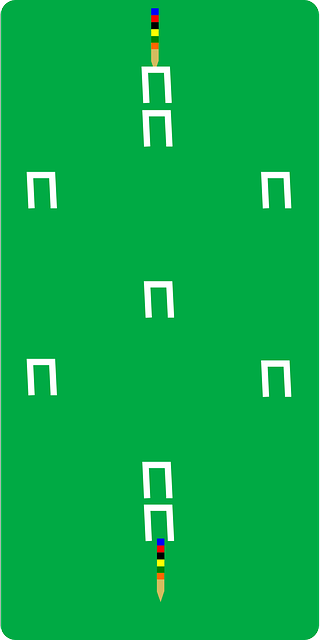Croquet: Difference between revisions
imported>Pat Palmer (linking to lawn) |
imported>Pat Palmer (Beginning to explain the game; no actual counting of strokes is required to play and know who wins (unlike in, say, golf)) |
||
| Line 5: | Line 5: | ||
{{Image|Croquet pitch, Brodsworth Hall (9041).jpg|right|450px|Croquet playing field showing a stake, balls, mallets and a wicket.}} | {{Image|Croquet pitch, Brodsworth Hall (9041).jpg|right|450px|Croquet playing field showing a stake, balls, mallets and a wicket.}} | ||
'''Croquet''' is a sport of uncertain origin, but it is believed to have been created in France and then imported to England where it is most popular. The earliest known record of the name is dated 1856 and is contained in a set of rules for the game. It is played on a [[Lawn|lawn]] and the object is to complete a course in which obstacles are set. Each obstacle is a hoop through which the ball must pass. The player hits the ball along the ground using a wooden mallet. The player who completes the course | '''Croquet''' is a sport of uncertain origin, but it is believed to have been created in France and then imported to England where it is most popular. The earliest known record of the name is dated 1856 and is contained in a set of rules for the game. It is played on a [[Lawn|lawn]] and the object is to complete a course in which obstacles are set. Each obstacle is a hoop through which the ball must pass. The player hits the ball along the ground using a wooden mallet. The first player who first completes the course by moving the ball around the entire court, going through all the wickets, and hitting the home stake, is declared the winner. Unlike in golf, there is no need for actual counting of strokes. | ||
As a sport, croquet enjoys the distinction of not requiring strength, speed, agility or endurance, but rather steadiness of hand and eye, and perhaps judgement, tactics or strategy, and it can be helpful to understand the capabilities, temperament, and likely behavior of one's opponents. | As a sport, croquet enjoys the distinction of not requiring strength, speed, agility or endurance, but rather steadiness of hand and eye, and perhaps judgement, tactics or strategy, and it can be helpful to understand the capabilities, temperament, and likely behavior of one's opponents. | ||
Revision as of 21:53, 9 February 2021
Croquet is a sport of uncertain origin, but it is believed to have been created in France and then imported to England where it is most popular. The earliest known record of the name is dated 1856 and is contained in a set of rules for the game. It is played on a lawn and the object is to complete a course in which obstacles are set. Each obstacle is a hoop through which the ball must pass. The player hits the ball along the ground using a wooden mallet. The first player who first completes the course by moving the ball around the entire court, going through all the wickets, and hitting the home stake, is declared the winner. Unlike in golf, there is no need for actual counting of strokes.
As a sport, croquet enjoys the distinction of not requiring strength, speed, agility or endurance, but rather steadiness of hand and eye, and perhaps judgement, tactics or strategy, and it can be helpful to understand the capabilities, temperament, and likely behavior of one's opponents.

